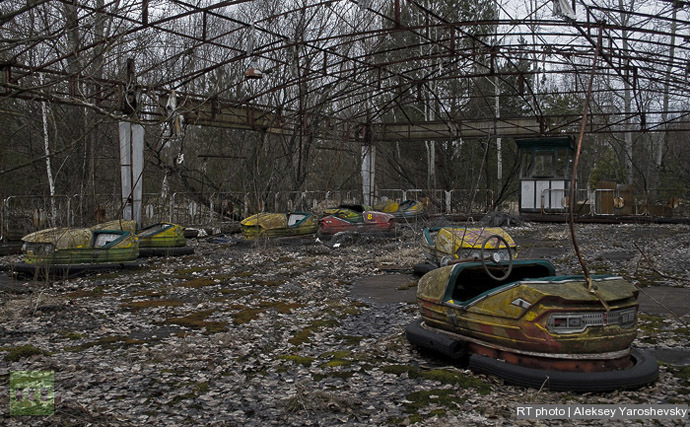On April 26, 1986, the infamous and catastrophic Chernobyl nuclear accident occurred. 28 years later, the world still remembers the worst-ever nuclear disaster when the Chernobyl power plant blew up as a result of faulty designs and subpar attendant training.
On April 25, a routine shutdown was conducted in preparation of a technical experiment that would theoretically determine how long the turbines would spin and supply power. As this experiment was previously attempted a year prior, new voltage regulator designs were going to be tested in conjunction.
By the time the nuclear operator went to shut down Reactor No. 4 was extremely unstable, resulting in a power surge that consequently led to fuel fragmentation, vessel rupture, and a series of steam explosions. The explosions and fire that followed the meltdown released massive amounts of radioactive material into the environment. Immediate actions to curb the fire and nuclear leaks included pouring sand and boron on to the reactor via helicopter.
Three kilometers away, the city of Pripyat evacuated 50,000 residents following the nuclear meltdown, and a radius of 30 kilometers was closed off by officials, totaling 115,000 people. Another 220,000 people were evacuated in subsequent years.
Within weeks, workers coated Reactor No. 4 in a temporary concrete "sarcophagus" to limit further release of radioactive material. Despite attempts to prevent this, Reactor No. 4 continued to leak fumes of contaminated waste. Four times more radioactive material was released for Chernobyl than by the atomic bombing of Hiroshima. Large quantities of radioactive material was released into the air for about 10 days.
This image depicts the Chernobyl nuclear power plant's fourth reactor in this May 1986 file photo. (Reuters)
The following months accounted for 28 deaths in all, two from the explosions themselves, the others from excessive exposure to radiation. To date, about 6,000 cases of thyroid cancer had been diagnosed in children who were exposed to the radiation from the meltdown. Many residents in Pripyat prior to the massive evacuation reported symptoms of radiation exposure, including migraines and a metallic taste in their mouths.
As for the surrounding environment, rivers, lakes, reservoirs, and flora and fauna suffered damaging effects as a result of the nuclear meltdown. Water sources in the affected areas of the Ukraine had levels of radiation that were cause for concern for months afterwards. Concentrations in fish were so high that they were unfit for consumption. However, groundwater was not affected nearly as badly since the majority of radionuclides decayed in the soil above long before it reached the water table. Animals in the worst hit areas either died or stopped reproducing. Livestock as far as northern Europe were required to take uncontaminated feed for a period before slaughter to ensure safe consumption.
The after-effects of Chernobyl were expected to be seen for upwards of 100 years following the disastrous meltdown of the Ukraine nuclear power plant. Economic expenses for containment and decontamination were equivalent to $18 billion dollars. The damaged reactor was sealed off with 200 cubic meters of concrete, and the entire facility was completely shut down on December 15, 2000, following the shutdown of the last operation reactor. The nearby town of Pripyat is still abandoned to this day as a result of the extreme radiation levels that contaminated the area.
Citations — Literary Sources
https://www.rt.com/news/155072-chernobyl-images-now-then/
http://www.nrc.gov/reading-rm/doc-collections/fact-sheets/chernobyl-bg.html
http://www.world-nuclear.org/information-library/safety-and-security/safety-of-plants/chernobyl-accident.aspx


No comments:
Post a Comment